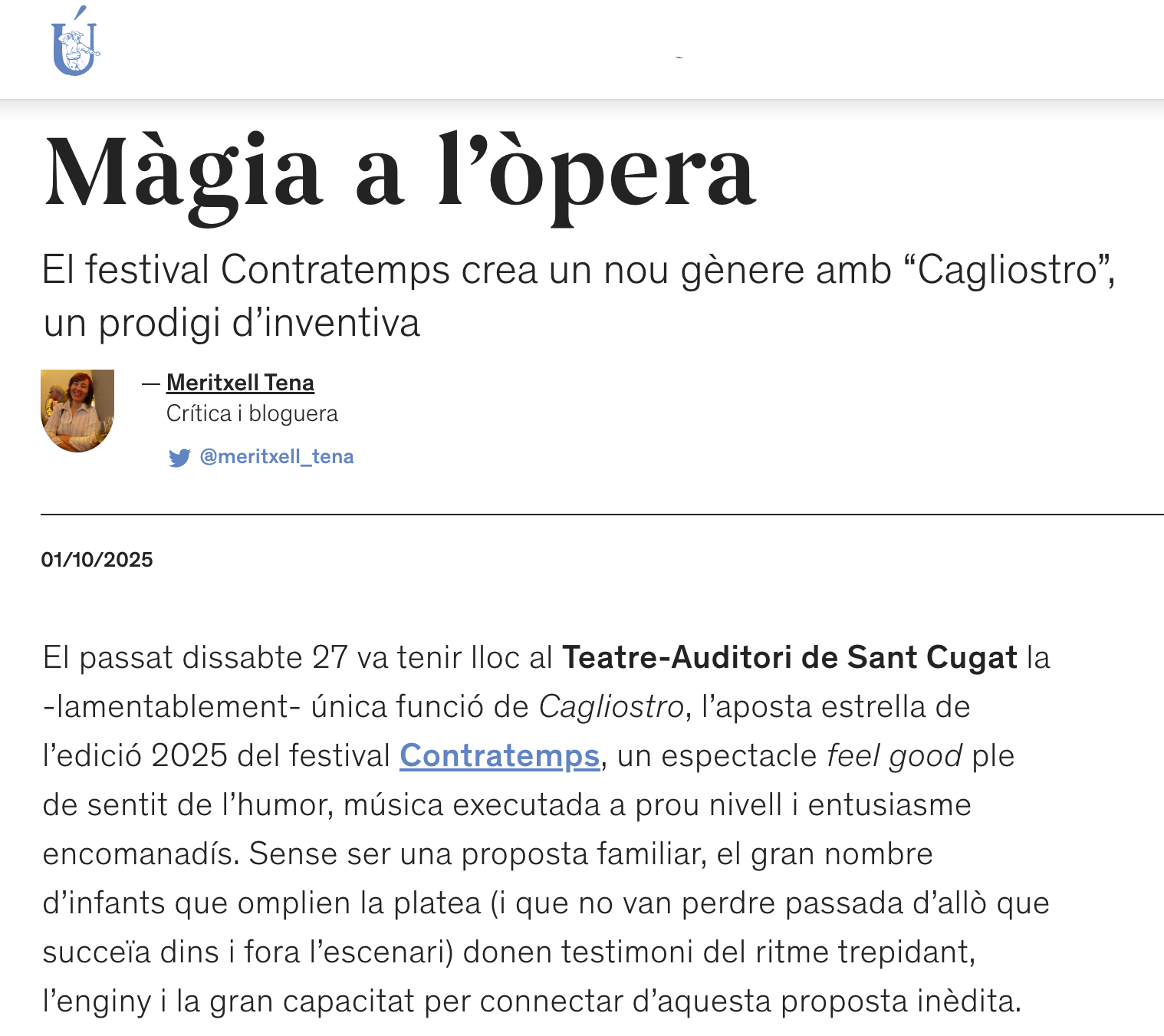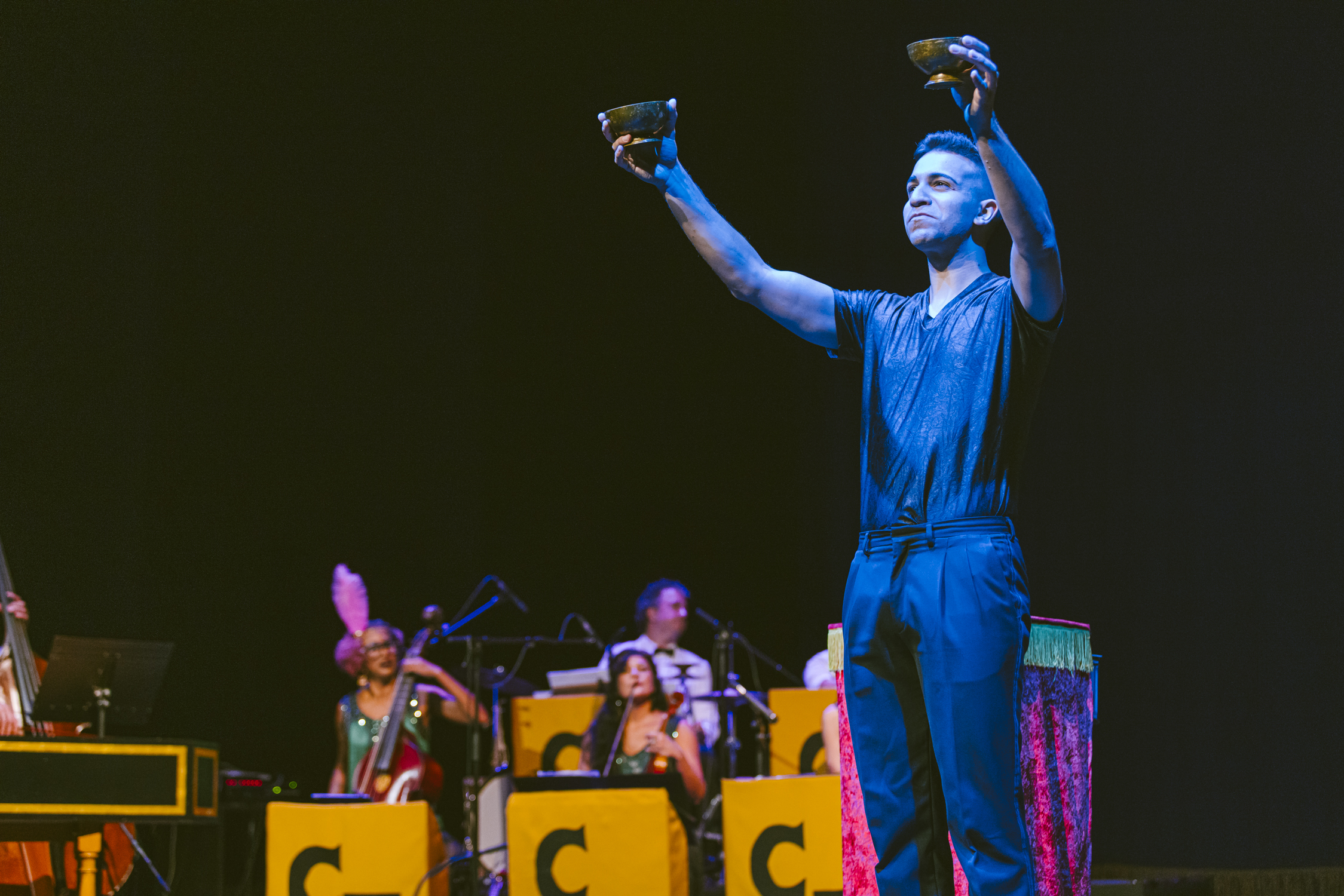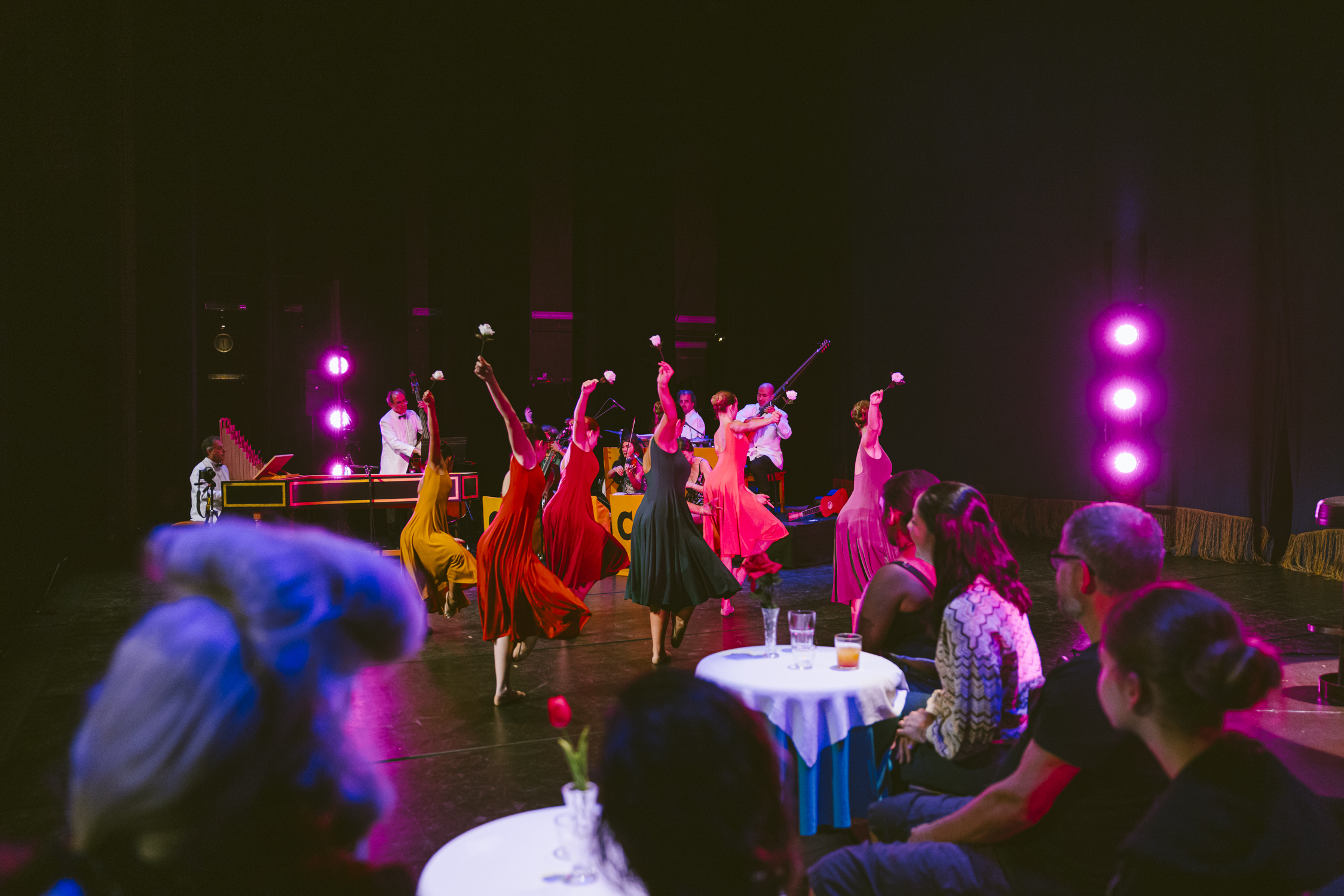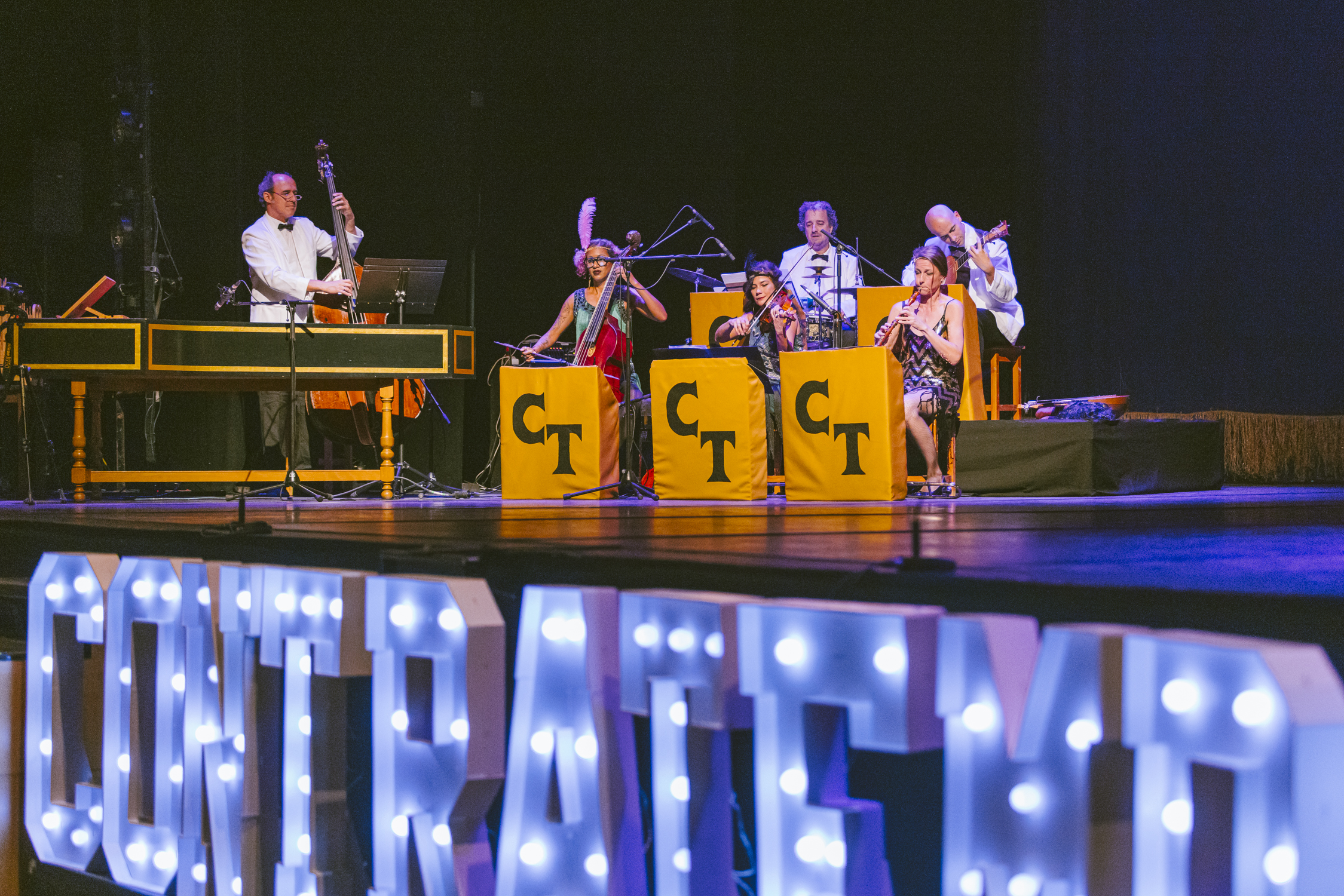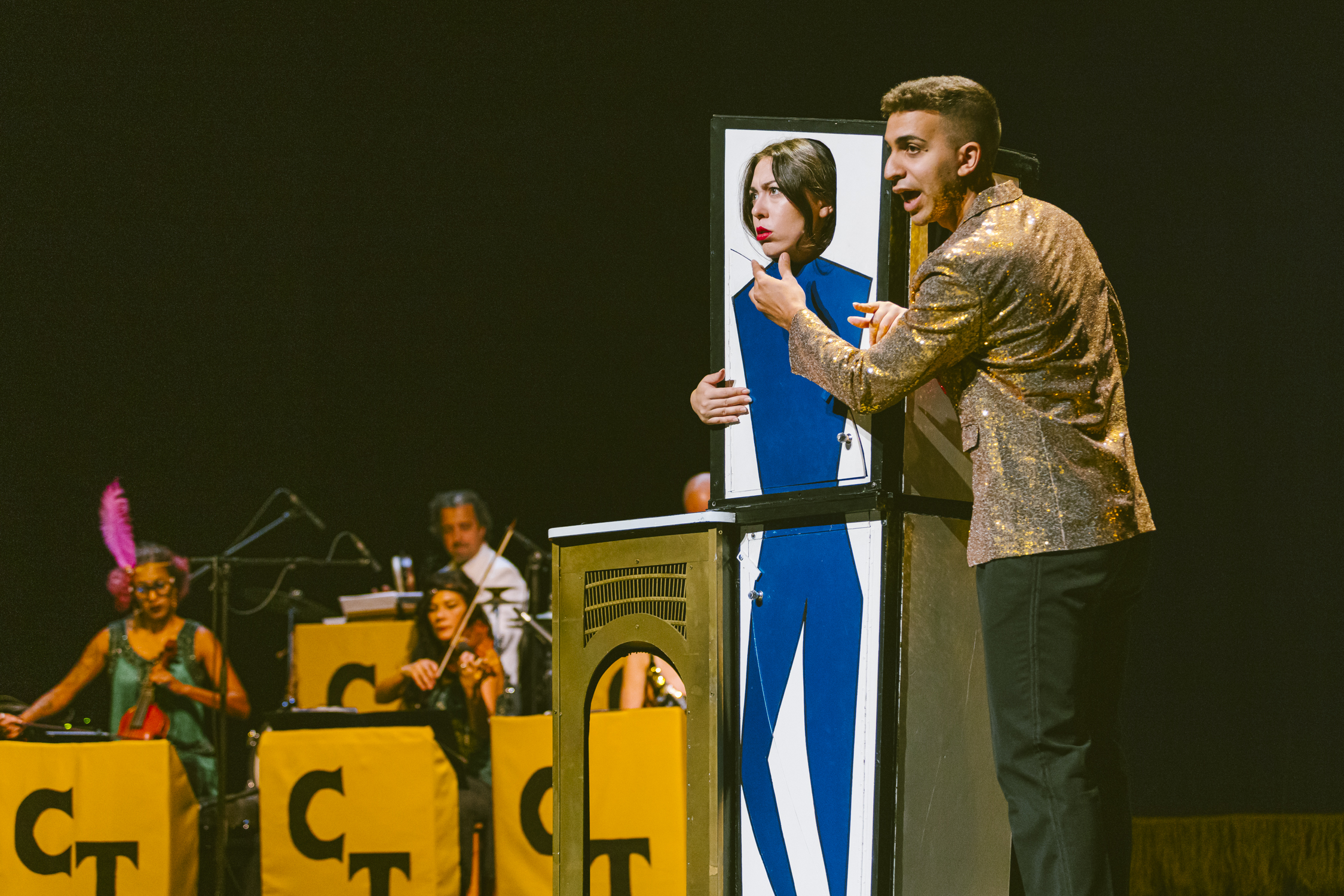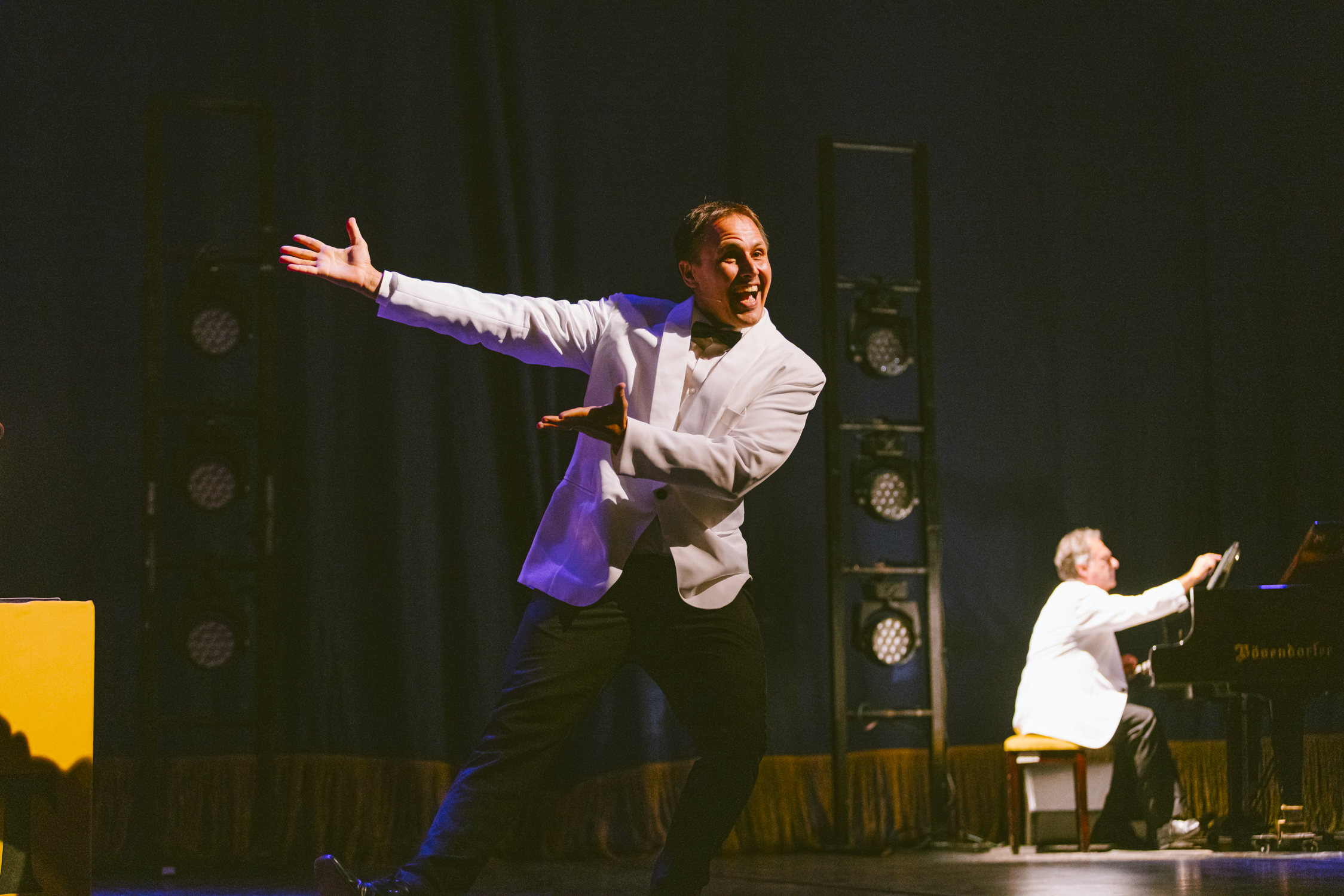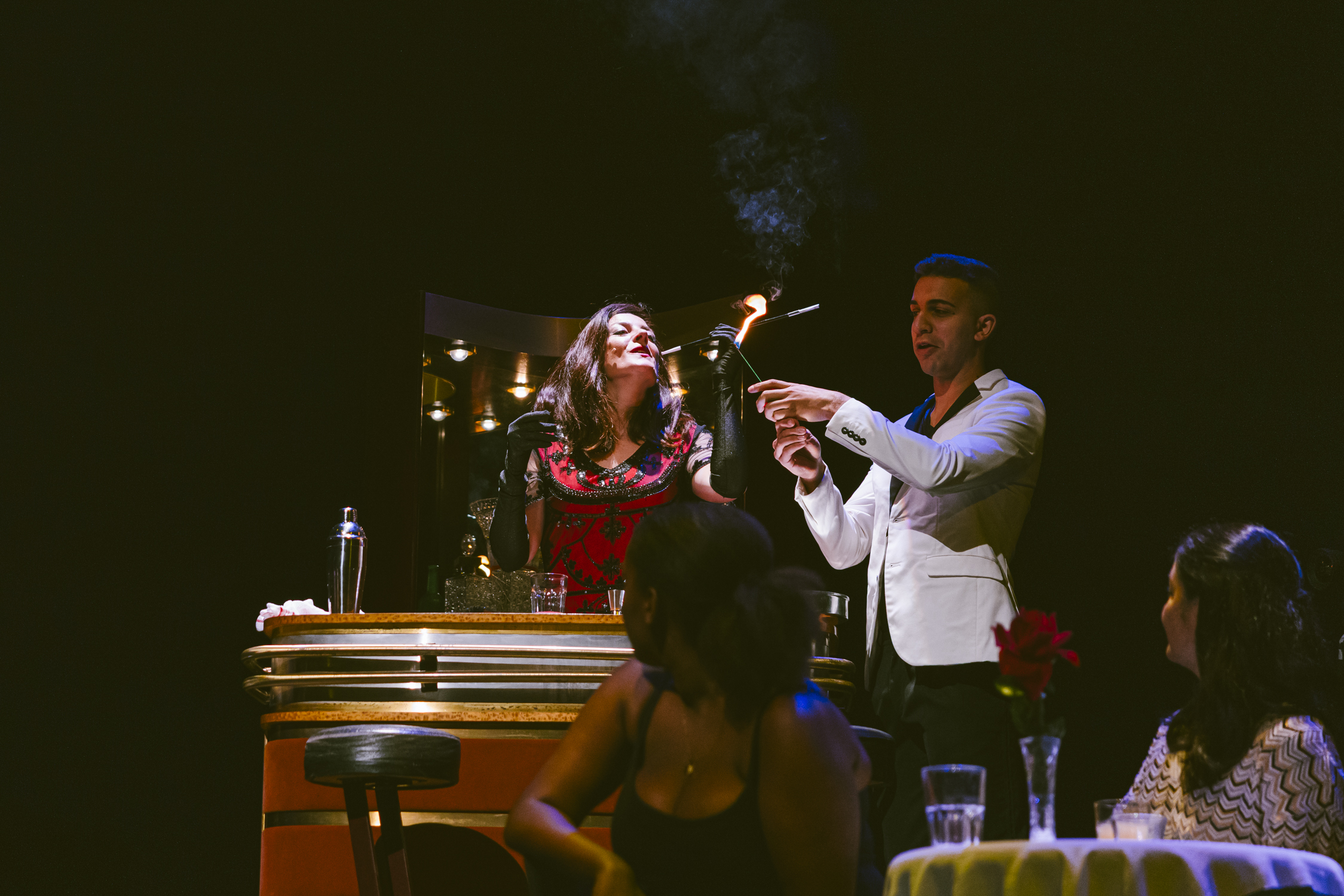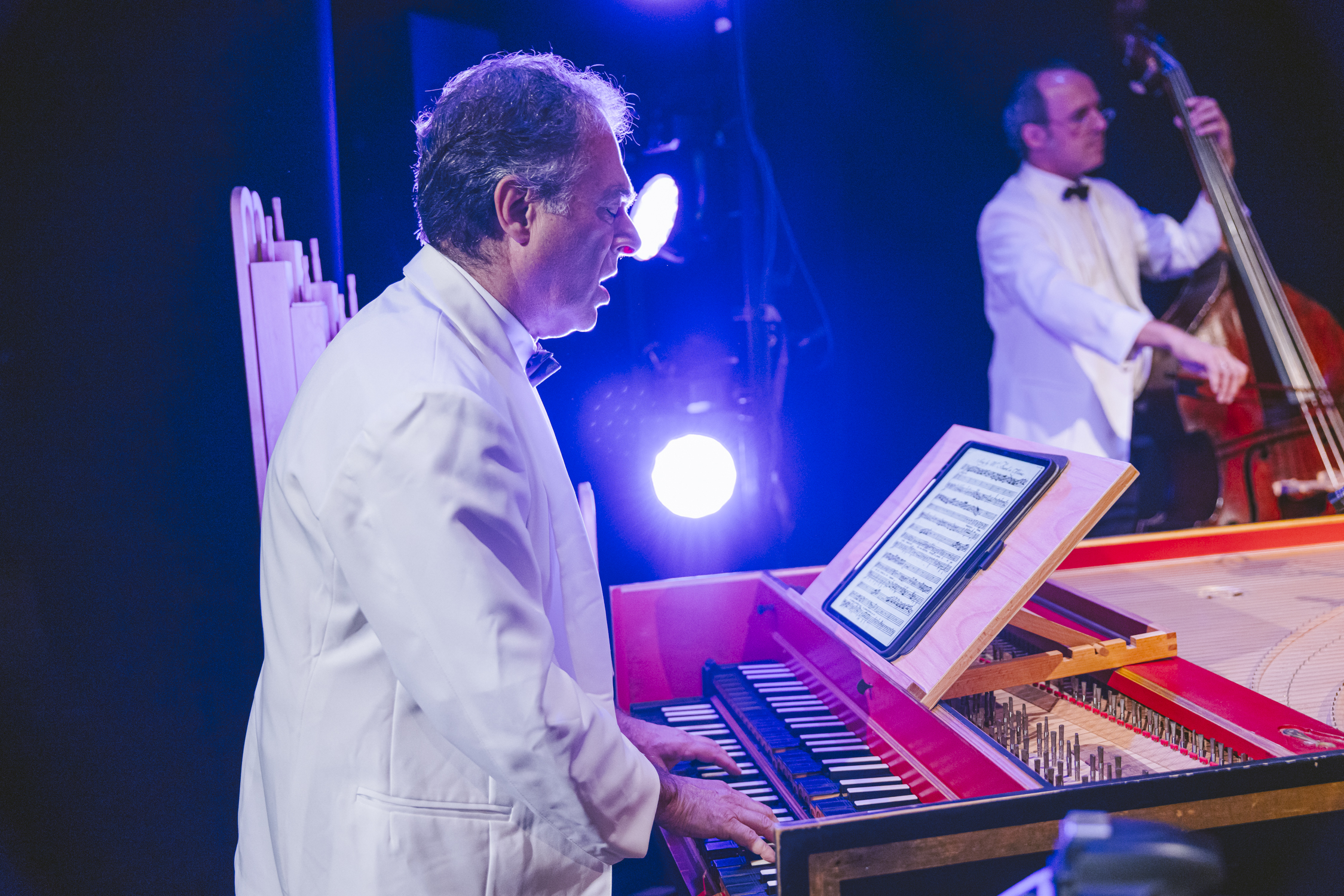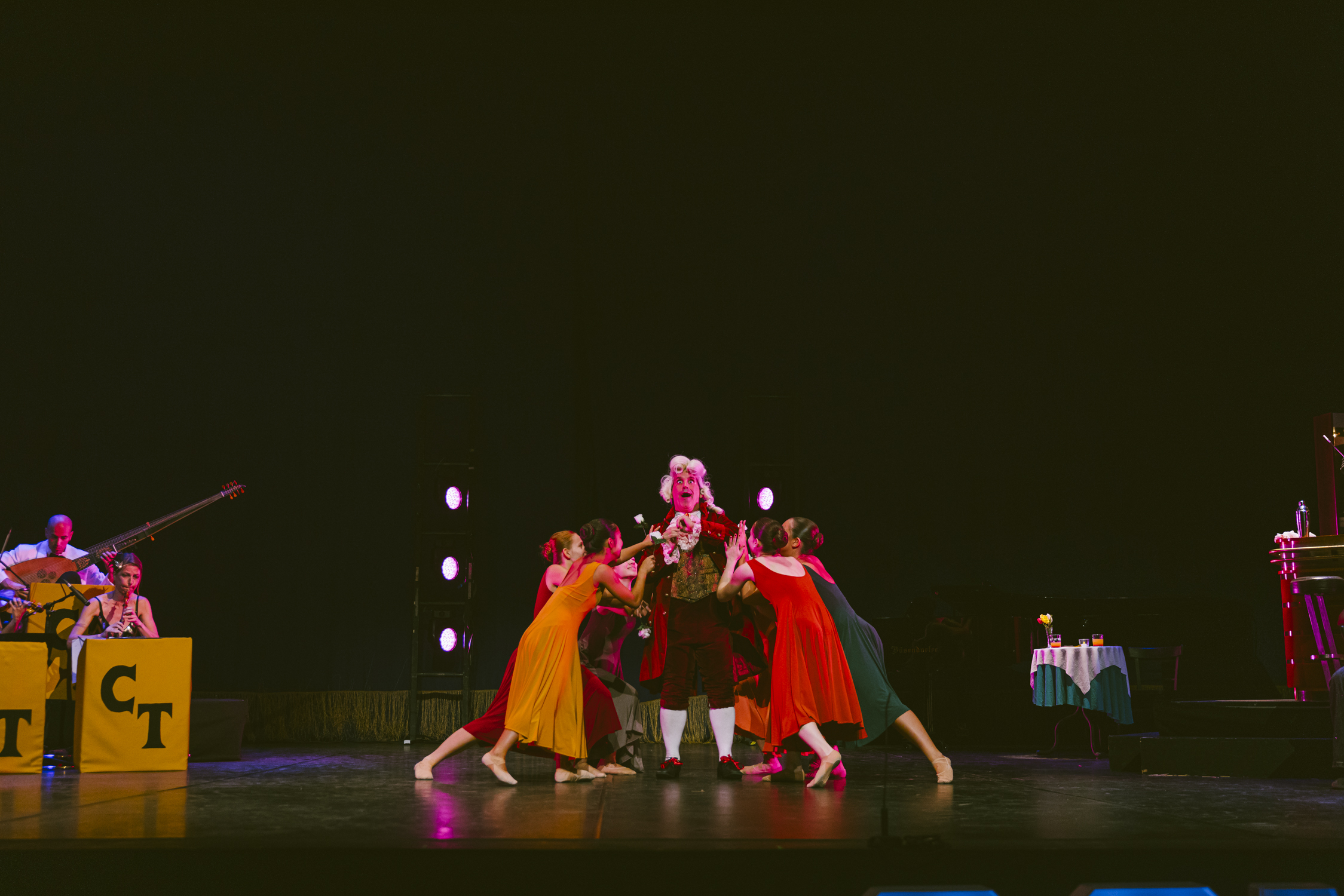CONTRATEMPS PRODUCTIONS
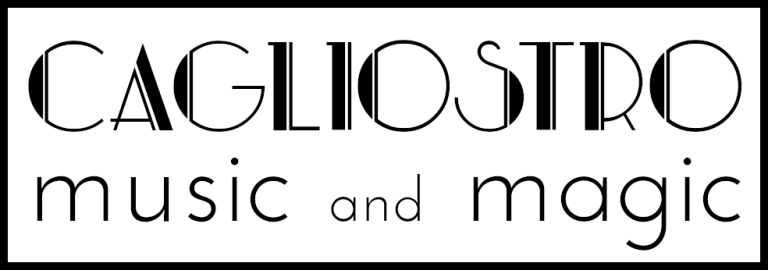
"Magic at the Opera: The Contratemps Festival creates a new genre with Cagliostro — a marvel of inventiveness, a feel-good production brimming with wit, finely executed music, and irresistible enthusiasm." — Núvol, 2025
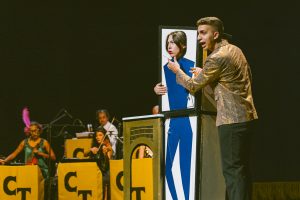
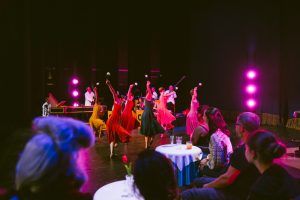
In the 18th century, Count Cagliostro —who was neither a count nor actually named Cagliostro!— traveled across Europe (Italy, France, England, Russia…), selling miraculous cures, making prophecies, and engaging in all manner of deceptions. He was even involved in the famous affair of the stolen jewels of Queen Marie Antoinette in France.
INTRODUCTION
CAGLIOSTRO is a comedy inspired by the extravagant life of Giuseppe Balsamo, that fascinating 18th-century figure who reinvented himself as a world-famous magician.
In our CAGLIOSTRO, a spectacular magician takes the stage with a dazzling cabaret act designed to delight the audience. But when one of his tricks goes wrong, the real Cagliostro himself — the most famous magician of the 18th century — bursts onto the scene. With his mastery and the irresistible charm of a born trickster, he instantly captivates the crowd. Will anyone be able to stop him and make him vanish once again? That task falls to Mag Lluc.
Meanwhile, the musicians of the Ensemble Contratemps bring the action to life with Italian music — both traditional and historical — enveloping the show in an atmosphere of adventure, mystery, and unforgettable magic.
Duration: 75 minutes
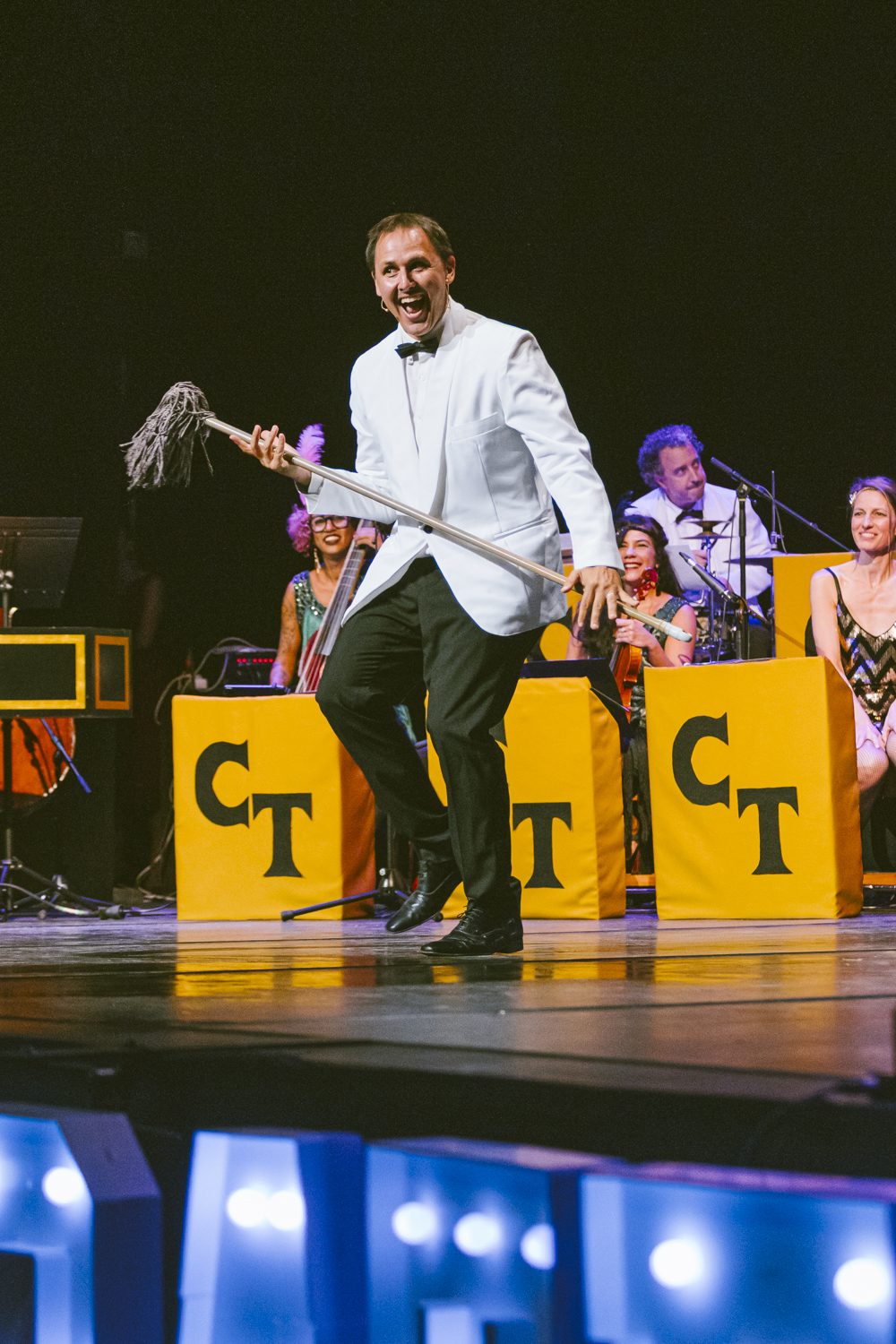
ARTISTIC TEAM
Adrián Schvarzstein, actor and stage direction
Mag Lluc, magician with assistant Rita Ardiaca
Choreography: Williams Castro
Toni Escoda, lights
Nicolás de Ángel, sound

PRESS
Magic at the Opera
The Contratemps Festival creates a new genre with Cagliostro, a marvel of inventiveness.
Last Saturday, the 27th, the Teatre-Auditori de Sant Cugat hosted — unfortunately — the only performance of Cagliostro, the flagship production of the 2025 edition of the Contratemps Festival. A feel-good show full of humor, well-executed music, and contagious enthusiasm, it captivated the audience from start to finish.
Although not specifically a family production, the large number of children in the audience — who didn’t miss a single moment of what was happening on and off the stage — is testament to the show’s breakneck pace, wit, and remarkable ability to connect with audiences in this unprecedented new work.
And we call it simply “unprecedented” to avoid sounding grandiose, but the truth is, we are not aware that anyone has ever thought to combine Baroque opera and magic before. Indeed, on stage were Ensemble Contratemps (led by the versatile Massimiliano Toni on piano and harpsichord), tenor Jorge Juan Morata (the tireless soul of this unique festival), the splendid soprano María Hinojosa (a true Baroque specialist), the hilarious actor Adrián Schvarstein, the young dancers of Escola Fusió, and Mag Lluc.
All of this came together in a marvel of inventiveness and delirious tempo that, in a brief 75 minutes, delivered masterpieces of early music — from Handel’s Rinaldo (“Lascia ch’io pianga”) to Strozzi’s Che si può fare, and even the priceless La tarántula es un bicho muy malo (pronounced “bisho”) from the zarzuela La tempranica — interspersed with magic acts and comedic sketches (often breaking the fourth wall) with audience participation, all set in a cabaret, bar included.
At this point, the reader might raise an eyebrow skeptically, wondering if so much can fit into such a limited time, and whether it all is delivered convincingly. The answer is yes, provided one accepts the rules of the game and understands that compromises are necessary: the project is born between two (or more) genres, and it presents itself proudly as such.
This Cagliostro is not a space for purists or those prone to tearing their clothes, which has the clear advantage of expanding the artists’ creativity and expressivity. On one hand, you can enjoy Hinojosa interpreting Strozzi with jazzy touches, or Morata singing “Semplicetto! A donna credi?” (from Handel’s Alcina) with the abandon of a 1950s crooner, without losing his characteristic bel canto elegance. On the other hand, one must accept that the amplified balance may slightly overshadow Katy Elkin’s oboe, or that much of Hinojosa’s self-parodic and exuberant reading of La tarántula is interrupted by the laughter provoked by Schvarstein during one of the evening’s most successful magic acts.
Does this mixture work? Yes, if one understands that this is not an opera in the traditional sense — and it works like Swiss clockwork.
Cagliostro is based on the figure of a historical character whose life borders on myth: traveler, alchemist, magician, charlatan. The full story of this fascinating figure was recounted in a pre-performance lecture the day before the show. The episodic structure of the production and the lack of dialogue allowed for subtle nods and winks, such as the necklace that Hinojosa produced from a fiery container while singing, which became a running thread through several numbers and humorous gags, referencing the theft of Marie Antoinette’s jewels that once landed the swindler in prison. That said, the performance does not provide broader historical context beyond the costumes, so part of the audience — if they had not read the program in advance — might not have fully understood the story or the character’s dramatic entrance when a magic trick supposedly fails. But, as noted, one must accept the rules of the game, since the show’s tone is deliberately different.
Beyond the undeniable vocal prowess of Hinojosa and Morata — who did not spare any resources even when they were not the center of attention — the violinist Guadalupe del Moral received well-deserved acclaim. Equally deserving of recognition were Lixsania Fernández, whose subtle viola da gamba added delicate color, and Guillem Abad Reyes, whose rhythm kept the momentum lively. The audience was also treated to a glimpse of the portable organ that the association has revived as part of an ambitious project to recover historical instruments.
Contratemps’ production is neither a history lesson nor a conventional opera, and it should not be judged by those standards. What it is, however, is an opportunity to enjoy imaginative exuberance, witness singers pushing beyond their comfort zones, and revel in a genuine desire to entertain and be entertained. And this is no frivolity: engaging audiences of all kinds is a serious matter, and Cagliostro accomplishes it brilliantly.
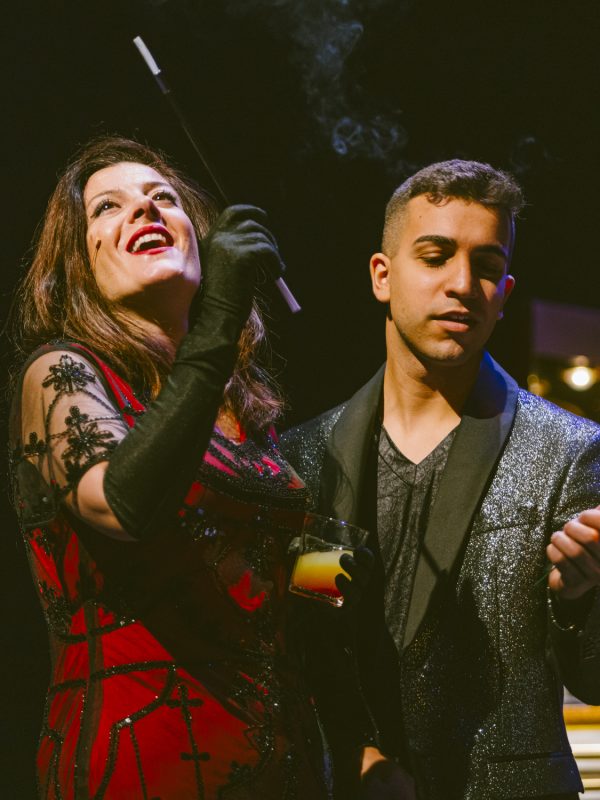
Adrián Schvarzstein, stage direction
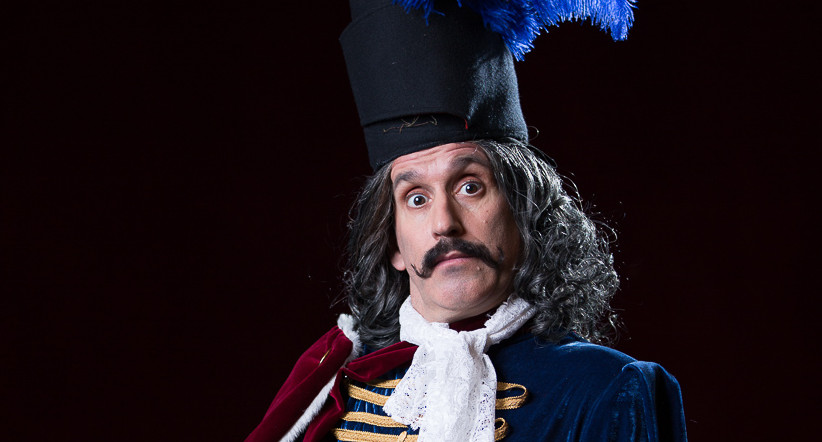
Living in Barcelona, I am a blend of several nationalities whose artistic training took place across Europe. I spend my life eagerly collecting experiences — as an actor, stage director for music and opera, and a creator in circus and street theatre.
I love bringing together different artistic disciplines into a single performance, collaborating with wonderful colleagues to create vibrant, energetic artistic experiences.
After a fruitful experience with the Belgian circus Ronaldo, I created Circus Klezmer, which toured for twelve years.
Street theatre productions such as L’home verd, El llit, Dans, and ARRIVED — as well as Sweet Home on wheels — continue to tour throughout the year. With Teatro Kamchàtka, the theme of migration became one of our central subjects.
My work with Le Tendre Amour opened the doors of the early music world to me. More recently, I have directed Mozart operas and collaborated with Art House17 in Graz on a wide variety of creative projects.
My most important goal: to make the audience an active participant.
Chaos, surprise, and innocent provocation are just some of the secrets that have helped me succeed in theatre and festivals in more than 70 countrie
Mag Lluc, magician
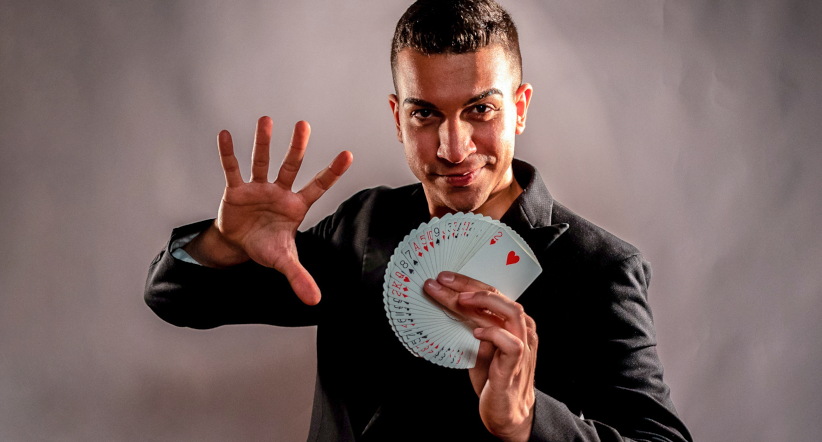
Mag Lluc is a young illusionist with a deep passion for the art of magic. When he steps onto the stage, his presence and gaze immediately captivate the audience. With a charismatic and elegant style, he draws spectators into his world through a kind of magic that is intimate, playful, and astonishing — enchanting both young and old alike.
His shows blend humor and irony, sparking constant laughter, yet they go far beyond mere comedy. Lluc also knows how to create moments of stillness and poetry, infusing his performances with genuine emotion and sensitivity. The result is a complete and captivating experience that leaves no one indifferent.
In 2018, he began working with the renowned magician Mag Lari as a stage assistant. Over the following four years, he had the opportunity to take part in several acclaimed productions, including Una nit amb el Mag Lari, Dolce Vita, and 25 il·lusions.

2025 Contratemps production in residence at the Teatre Auditori of Sant Cugat
with the support of:








